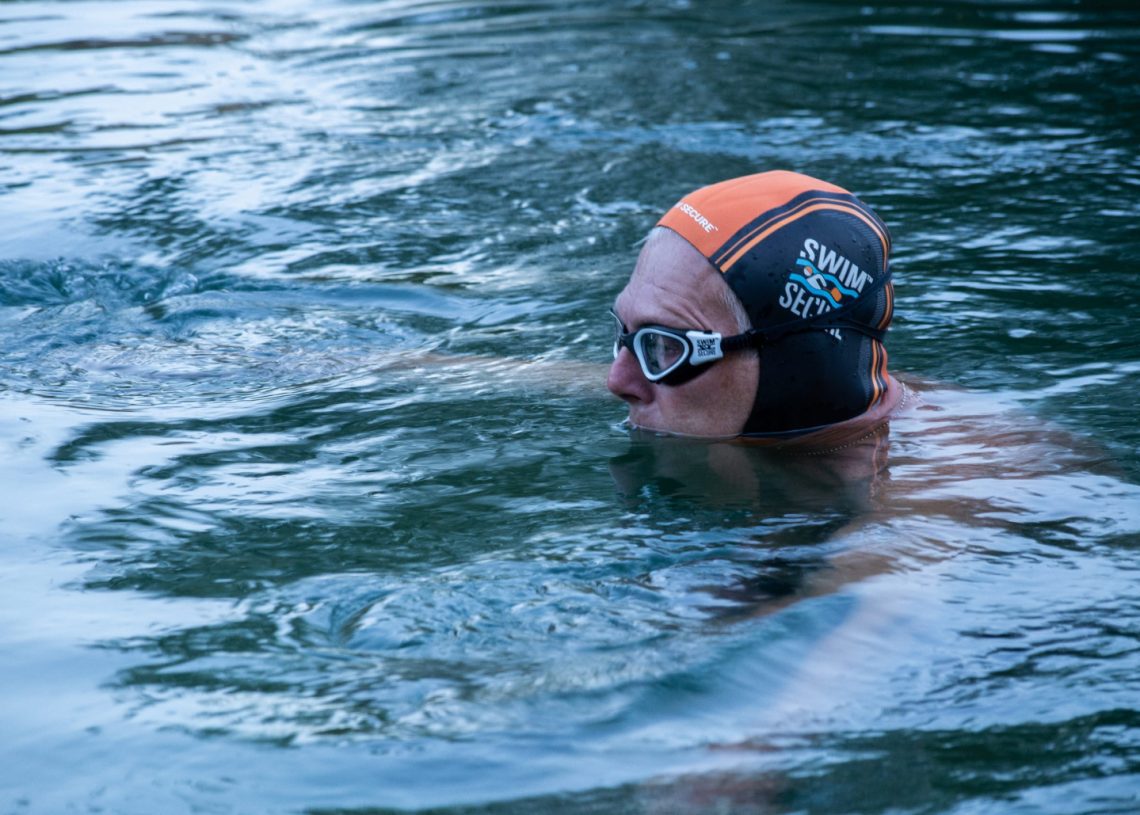
Breathing when swimming: nose vs mouth
The mental and physical health benefits of cold water swimming are well known, but did you know we can also boost our health simply through the way we breathe? Advanced Oxygen Advantage Instructor, Marianne shares the benefits of nose breathing when swimming breaststroke.
While nose breathing is not recommended (and is extremely difficult) while swimming front crawl, many of us switch to heads-up breaststroke in the winter. This enables us to breathe in and out through our nose, which is the optimal way for our health and during physical exercise.
Nose breathing has many important health benefits, which are relevant to winter swimmers:
- It prepares the inhaled air before it enters the lungs. For winter swimmers, the cold winter air is warmed and moistened in the nose to avoid narrowing and constricting of the airways, which can create breathlessness, tightness of the chest, and coughing, especially for people with asthma or post-COVID.
- Conserves more heat and water. When exhaling through the mouth, more heat and up to 42 per cent more water is lost. So swimmers should always exhaling through the nose to avoid unnecessary dehydration and heat loss. This includes floating on your back to get your breath back, try to only breathe through your nose.
- Supports the body’s natural resistance to infection. The sinuses produce Nitric Oxide, which is a gas that contains anti-viral, anti- bacterial and anti-fungal properties. The tiny hairs and mucus which line our nose help trap particles, then Nitric Oxide sterilises the air before it reaches the lungs.
- Slows the pace of our breathing, as the nose is a smaller airway than the mouth so it creates 50 per cent more resistance. Slower breathing lowers our heart rate and triggers our relaxation response.
- Triggers the use of our diaphragm muscle, which is located just under our ribs and makes us breathe more deeply. Mouth breathing tends to trigger a shallower chest breath, which puts us more in stress mode and reduces the amount of oxygen sent around the body.
- Using the nose reduces nasal congestion, making it easier to breathe at rest and during exercise. Many people think it is good to inhale through the nose but exhale through the mouth, but this tends to create nasal congestion.
Impressive eh?! See how it feels and know that your body will thank you for it! This doesn’t mean you have to swim silently without chatting with fellow winter swimmers, but also enjoy some quiet time by closing your mouth and breathing slowly in and out of your nose.
Marianne is an Advanced Oxygen Advantage Instructor, Swim Mastery Coach and Open Water Coach. She offers courses, workshops and online seminars via Breathe4Sport and Weightless Swimming. Read more training & technique features from Outdoor Swimmer.
Image: Bruno Teves Visuals









